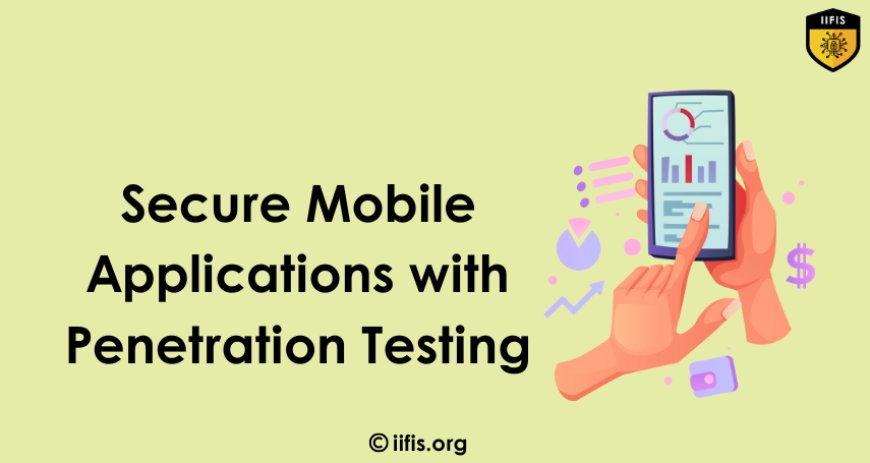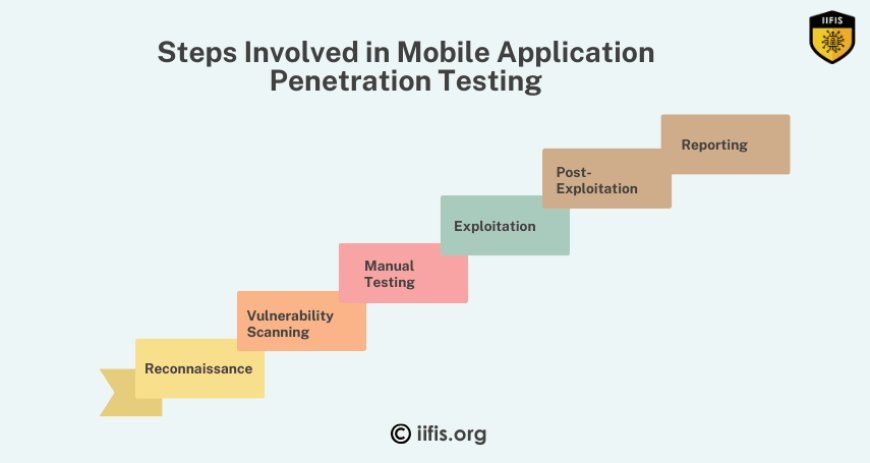Secure Mobile Applications with Penetration Testing
Learn how penetration testing helps improve the security of mobile apps by finding weaknesses and preventing potential cyber threats and data breaches

As mobile applications continue to dominate the digital world, they’ve become essential to everything from managing finances to staying connected with loved ones. With the growing volume of sensitive data exchanged through these apps, the risk of cyber threats has never been greater. As someone who has worked in the field of information security for years, I can tell you that one of the most effective ways to safeguard your mobile application is through mobile application penetration testing.
Penetration testing is a critical step in identifying vulnerabilities before they can be exploited by malicious actors. By simulating real-world attacks, this testing provides valuable insights into your app’s security posture, helping to prevent data breaches and ensure the protection of your users.
What Is Mobile Application Penetration Testing?
Mobile application penetration testing is a process of assessing the security of a mobile application by simulating real-world cyberattacks. The goal is to identify vulnerabilities in the application that could be exploited by hackers, ensuring these weaknesses are addressed before they are discovered by malicious users.
Penetration testers use various techniques, tools, and strategies to identify common security flaws like insecure data storage, improper authentication mechanisms, and weak encryption. By performing thorough security testing, businesses can understand the risks associated with their mobile applications and take necessary measures to mitigate them.
Why is mobile application penetration testing essential?
With the growth of mobile app usage, the risk of cyber threats has increased. Many mobile applications store sensitive data, such as personal information, financial details, and login credentials. If a vulnerability exists within the app, it could lead to data breaches, unauthorized access, or even a complete app compromise.
Here are some reasons why mobile application penetration testing is essential:
-
Data Protection: Apps often contain sensitive data. Penetration testing ensures that this information is secure and not vulnerable to unauthorized access.
-
Regulatory Compliance: Many industries require apps to meet certain security standards. Penetration testing helps ensure compliance with regulations like GDPR, HIPAA, or PCI DSS.
-
Mitigating Risks: Identifying vulnerabilities early can significantly reduce the risk of exploitation, helping businesses avoid costly security breaches.
-
Reputation Protection: A security breach can damage your brand’s reputation. Conducting penetration tests can protect your app’s reputation and maintain customer trust.
Common Vulnerabilities Identified Through Penetration Testing
Mobile apps are prone to several common vulnerabilities that could be discovered through mobile application penetration testing. Some of the key vulnerabilities include:
-
Insecure Data Storage: Sensitive data, such as passwords or user credentials, may be stored insecurely, making it easier for hackers to steal.
-
Weak Authentication Mechanisms: Poor authentication methods, such as weak passwords or a lack of multi-factor authentication, can leave an app open to unauthorized access.
-
Improper Session Management: If sessions aren’t properly managed, attackers can hijack them and impersonate legitimate users.
-
Insecure Communication: If sensitive data is transmitted over unencrypted channels, it becomes vulnerable to interception.
-
Code Injection: Apps with weak input validation can be vulnerable to attacks like SQL injection or command injection, enabling attackers to execute malicious code.
Penetration testing helps identify and fix these weaknesses before they can be exploited.
Steps Involved in Mobile Application Penetration Testing
Mobile application penetration testing is a detailed and structured process. Here’s an overview of the key steps involved:
-
Reconnaissance: The tester gathers information about the target mobile app, including its architecture, functionality, and platform (iOS, Android, or hybrid).
-
Vulnerability Scanning: Automated tools are used to scan the app for known vulnerabilities, such as outdated libraries or weak encryption.
-
Manual Testing: Manual testing is conducted to identify complex vulnerabilities that automated tools might miss, such as business logic flaws or server-side issues.
-
Exploitation: Testers attempt to exploit identified vulnerabilities to understand the potential impact on the app.
-
Post-Exploitation: If a vulnerability is successfully exploited, testers analyze the extent of the breach, including the data that could be accessed.
-
Reporting: A comprehensive report is created, detailing the findings, risks, and suggested remediation steps to secure the mobile app.

Benefits of Conducting Mobile Application Penetration Testing
The primary benefit of conducting a mobile application penetration test is to ensure that your app is as secure as possible. However, there are additional benefits that extend beyond just security:
-
Early Detection: By identifying vulnerabilities early in the development lifecycle, you can address them before your app goes live, saving both time and costs.
-
Improved User Trust: Users are more likely to trust an app that has undergone penetration testing and proven to be secure, leading to higher adoption rates.
-
Prevent Data Breaches: Penetration testing helps prevent data breaches that could lead to severe financial and reputational damage.
-
Cost-Efficient Security: Fixing vulnerabilities after a breach occurs can be far more expensive than identifying and addressing them proactively during development.
Best Practices for Securing Mobile Applications
While mobile application penetration testing is critical for identifying security gaps, it should be part of a broader mobile app security strategy. Here are some best practices to further enhance the security of your mobile apps:
-
Encrypt Sensitive Data: Always encrypt sensitive data both in transit and at rest to prevent unauthorized access.
-
Implement strong authentication: Use multi-factor authentication (MFA) to add an extra layer of security.
-
Secure API Connections: Ensure that APIs are securely integrated and protected against potential exploits.
-
Regularly Update the App: Keep your app and its components up-to-date with the latest security patches and updates.
-
Limit Permissions: Only request the necessary permissions from users to reduce the app’s attack surface.
-
Use Secure Coding Practices: Train developers on secure coding standards to reduce the risk of introducing vulnerabilities in the app’s code.
Become a Certified Mobile Application Security Expert
If you’re looking to expand your knowledge in mobile application security and showcase your skills in penetration testing, earning a Certified Mobile Application Security Expert (CMASE) certification is a great step. This certification is intended for professionals who want to prove their ability to secure mobile apps against the growing range of cyber threats.
Earning the CMASE certification will deepen your understanding of mobile application penetration testing and enhance your career in mobile security. As a Certified Penetration Tester, you’ll learn to identify and address vulnerabilities, focusing on secure coding, risk management, and effective solutions to protect mobile apps from cyber threats.
Whether you’re a developer, IT professional, or security specialist, becoming a Certified Mobile Application Security Expert will provide you with the skills needed to protect your mobile applications and ensure they remain secure in today’s digital landscape.
When it comes to securing mobile applications, waiting for a breach to happen isn’t an option. Mobile application penetration testing helps identify weaknesses before they can be exploited, giving you a head start in protecting your app and user data. Regular testing not only boosts security but also helps you avoid costly breaches down the road. If you’re serious about app security, make penetration testing a priority—it's the smart and necessary move to keep your users safe and maintain your reputation.
























